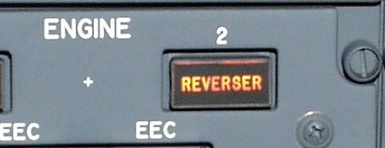There is a concerted effort in modern CRM teaching these days to ensure that inexperienced First Officers are aware of their responsibility to speak-up during line operations, in order that they contribute effectively to the decision-making process. In several companies, this is referred to as encouraging F/Os to ‘Advocate’ their thoughts and opinions when faced with situations requiring the cockpit crew to reach a decision.
You may wonder why this should be an issue. It is because history has proven that many airline accidents occurred where there was a steep ‘authority gradient’ in the flightdeck between a senior, experienced Commander operating with a junior colleague. In the final analysis of these events, if the junior F/Os had been effective in putting their view across to the Captain, then many of these accidents would not have occurred.
*
In July 2010, an Airbus A321 crashed into the Margala Hills near the destination airport Islamabad – the capital city of Pakistan. The flight was coming in from Karachi and was making an instrument approach in marginal weather. It is significant that a flight by China Southern Airlines had diverted only 30 minutes earlier having failed to gain visual contact with the runway. The bad weather at the time of the accident included poor visibility, low cloud and heavy rain. The accident investigation subsequently established that the A321 had been serviceable at the time of the accident – so this was classified as a CFIT* event.
Early reports from officials were quoted by the BBC: “There was nothing in conversations between the pilot and the Islamabad control tower that suggests anything was wrong“. However, when the CVR recording was released by the investigation team later itwas at odds with this statement. In addition to the ATC tower instructions/advice to the Captain to turn away from the high ground and the EGPWS** aural warnings of ‟TERRAIN AHEADˮ, there was also the First Officer’s voice which was heard saying; “Sir turn left, Pull Up Sir. Sir Pull Up...”
By this time it was apparent that the 61 year old aircraft commander with over 25,000 flight hours in his logbook had become disoriented and was displaying a lack of situational awareness. The resulting crash into the hills cost the lives of all 146 passengers and crew. The chain of events leading to the aircraft being flown unintentionally into high ground had begun a lot earlier in the flight however. The investigators learned from the CVR that for the first hour of the flight, the Captain made a point of testing the First Officer’s technical knowledge of the Airbus and for the rest of the flight the F/O became very quiet. Point 10.5 from Chapter 10 of the official report states: “The Captain’s behaviour towards the FO was harsh, snobbish and contrary to establish norms. This undesired activity of the Captain curbed the initiative of the FO, created a tense and undesirable environment, and a very conspicuous communication barrier in the cockpit, portraying a classic CRM failure”.
Significantly, later on in the flight when the Captain decided to fly a Circling Approach to the runway, he instructed the F/O to insert a series of waypoints into the Flight Management System. The F/O would have known this was unauthorised and illegal, but he did not challenge the Captain’s decision making. Chapter 11 (Conclusion) of the report includes the specific point 11.6 which reads: “FO simply remained a passive bystander in the cockpit and did not participate as an effective team member failing to supplement / compliment or to correct the errors of his captain assertively in line with the teachings of CRM due to Captain’s behavior in the flight”.
The report also included the alarming fact that the Captain ignored 21 repeated aural EGPWS ‘Terrain’ and ‘Pull-Up’ warnings over a period of 70 seconds before the aircraft impacted the ground. While the report of the accident flight and the breakdown of CRM was singularly shocking, sadly it was not unique. In the last decade there have been too many hull-loss accidents which have been as a result of similar human factors failures. All of which explains the current and renewed focus on CRM training in order that inexperienced First Officers are not shy to ‘Advocate’ their views.
The caveat to all of this of course is that the F/O must know what they are talking about in the first instance. I have experienced some interesting situations in the not-too-distant past while flying airliners when the F/O has voiced his/her view without having the in-depth technical knowledge to back it up. A case in point was when we were at high speed, shortly before V1 taking off from an airport in London bound for Morocco. I was the Captain, flying as Pilot Monitoring and the F/O was PF. The aircraft was a Boeing 737NG. The Master Caution lights illuminated due to a Thrust Reverser light in the overhead panel. There were no other fault indications, no accompanying airframe or engine vibrations, the engine parameters appeared normal and so I stated “Continue” in accordance with SOPs. Very soon afterwards I called “Vee One – Rotate!” and we got airborne.
Passing 400 feet the First Officer asked me to “Restate the Failure” and as I looked at the overhead panel with the glaring REVERSER light brightly illuminated, I did have a strong desire to say “Mate – you really don’t want to know...” I resisted my natural urges however and simply said what I saw was the problem. “We have an indication REVERSER light on the number two engine“, to which he correctly responded “No memory items, we will action the QRH drill once the after take-off checklist is completed“. We did this and considered the problem and our options. As my young colleague had been well trained in a modern CRM environment with our airline, I was comforted in the knowledge that I could rely upon him for positive input to help us resolve the situation. What I was not expecting though was his immediate statement… “We’ll have to GO BACK!” He was quite adamant about this until I said to him, “Steady on chap, let’s not jump to conclusions. We are six tonnes over max landing weight for a start...”

Of course the Maximum Landing Weight does not apply in an emergency situation, but this was a non-normal situation and not in the emergency category. In accordance with the QRH drill for the aircraft which we had both read and actioned together, if the Reverser light was illuminated without any other symptoms, then we could continue the flight to destination. We did not have to go back! So we discussed it further, I called the Airline Engineers and Ops departments who agreed that we could safely continue the flight. In fact they very helpfully suggested that we land at a maintenance base enroute to Morocco to have the Engineers lock-out the #2 Engine Thrust Reverser so we would not have an MEL/No-Go item on the ground in Morocco. We coordinated with the cabin crew; informed the passengers; arranged for the Maintenance Team to meet us in Southern Spain and then planned our approach and slightly overweight landing at our enroute alternate airport. All in all quite a busy day in the office. The actual turnround was very efficiently carried out and the handling agent even met us on arrival with our next flight plan as we opened the doors.
*
My abiding memory of it all though was that the F/O’s immediate response was “We’ll have to GO BACK…!” without properly considering all of the implications and consequences. Although it is unusual (and somewhat disquieting) to see a Thrust Reverser light illuminated inflight with the worry that the reverser might deploy, I explained that there were several interlocks which would have to simultaneously fail for that to happen. In fact I assured him that a few years ago, I had personally flown a 737 from the Middle East through the night to the UK (refuelling on the way) with an identical fault. This was true, but THAT as they say is another story…
The moral of this story is that while the modern CRM trends are welcomed, inexperienced aviators must remember that the old goat sat in the left-hand seat has usually seen an awful lot of stuff before. Yes by all means Advocate, however this should come after Aviate and Navigate in the time-honoured tradition. Part of Aviate is being entirely familiar with the contents of the QRH and technical matter concerning possible system malfunctions. Don’t start off advocating with: “We’ll have to GO BACK!”
Most important of all, try not to jump through the decision-making process without communication between not only the two pilots onboard, but other outside agencies. The Engineering Department on that day were extremely helpful to us and gave excellent support which enabled the flight to continue in safety with a minimum of delay. What more could we ask for?
© James McBride Sofia, Bulgaria
*CFIT – Controlled Flight Into Terrain
**EGPWS – Enhanced Ground Proximity Warning System







